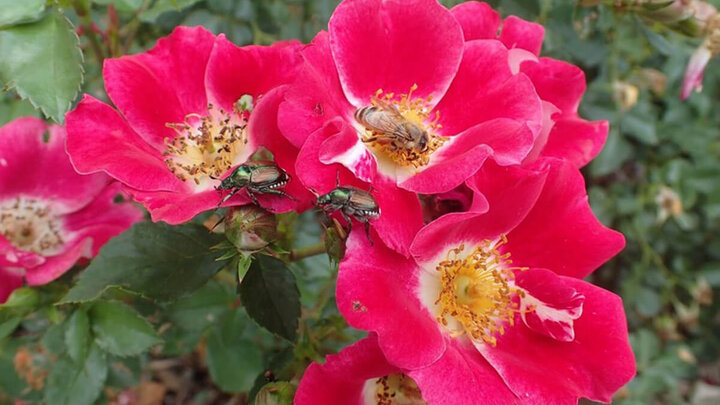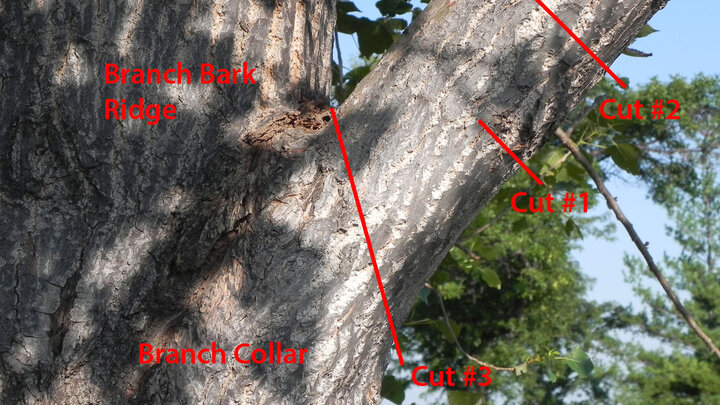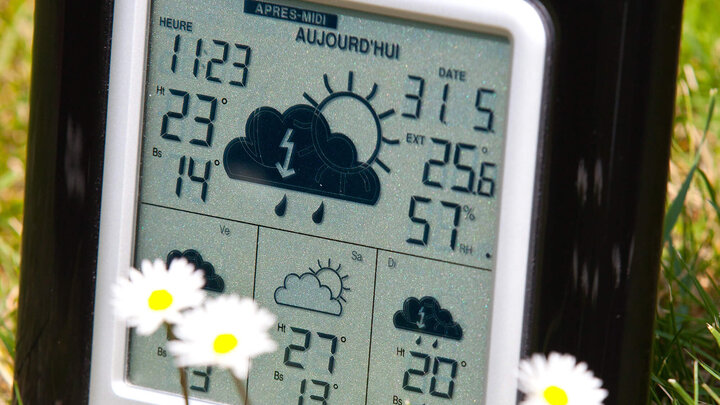Insects are cold-blooded creatures, relying on external temperatures to advance in growth and development. Knowing when insects will reach a specific development stage, and are most susceptible to control, is difficult for several reasons. First, weather varies from year to year. Unusually cool spring weather slows insect development, making correct pesticide timing later than it would be in a warm year.
Second, there is great variation in weather between locations. Typically eastern Nebraska is 2-4 weeks ahead of western Nebraska in both plant and insect development. But even within the same county, urban locations are typically warmer with faster plant and insect development, than rural locations.
When pesticide applications are needed, all this variation makes is difficult to pinpoint the best timing. Use of growing degree days is a tool landscape managers use to identify the best time for their location, enabling them to make highly effective pesticide applications and minimize total pesticide needed for good control.
What Are Growing Degree Days?
Growing degree days (GGD) are a measure of accumulated heat. A heat value is assigned to each day based on temperature. Each day’s heat value is added together to give an estimate of insect growth stage. One degree day results when the average day’s temperature is one degree over the insect’s threshold temperature.
Begin with the insect pest needing control and determine its base or threshold temperature threshold - the temperature below which no growth or development occurs. Many horticulture and forestry insect GDD calculations are made using the base temperature of 50° F, although some cool season insects may be active at 38° F or 43° F. Insects also have an upper temperature threshold value, 86° F, above which no significant increase in insect growth rates occurs.
Below is a short list of common landscape insects and their GDD. For a more complete list, visit Michigan State University GGD of Landscape Insects or GGD of Conifer Insects.
| Insect Pest | Life Stage | GDD50 |
| American plum borer | adult flight and egg laying | 245-440 |
| 2nd generation | 1375-1500 | |
| Bagworm | caterpillar emergence | 600-900 |
| Banded ash clearwing | adult emergence | 1800-2200 |
| Bronze birch borer | adults; eggs; new grubs | 400-600 |
| Codling moth | 1st generation control stage | 250 |
| 2nd generation control stage | 1250 | |
| Eastern tent caterpillar | egg hatch | 45-100 |
| tents apparent | 150 | |
| pupation | 450 | |
| Emerald ash borer | 1st adult emergence | 400-500 |
| peak adult activity | 1000-1200 | |
| Euonymus scale | egg hatch – 2nd generation | 1050-1900 |
| European pine sawfly | 1st larvae | 100-195 |
| Fall webworm | egg hatch | 850-900 |
| caterpillars feeding | 1200-1800 | |
| tents become apparent | 1850-2050 | |
| Greater peach tree borer | adult emergence | 575-710 |
| Honeylocust spider mite | egg hatch | 220-250 |
| Japanese beetle | adults emerge and feed | 950-2150 |
| Lesser peach tree borer | adult flight | 350-375 |
| Lilac borer | adult flight | 325-350 |
| Magnolia scale | egg hatch | 1925-1950 |
| Mimosa webworm | 1st generation egg hatch | 850-900 |
| Oystershell scale | egg hatch | 350-500 |
| Pine needle scale | 1st generation control stage | 400-500 |
| 2nd generation control stage | 1500 | |
| Spruce spider mite | 1st egg hatch | 150-175 |
| Zimmerman pine moth | 1st larvae | 25-100 |
| adult flight | 1200 |
Calculating GGD - Using 50F Base Temperature
Calculate GDD by adding the low temperature and high temperature for the day, then divide by 2. Subtract the threshold temperature from the insect.
GGD = (Daily max temp + Daily min temp) / 2 - Base temp
For example, if the day’s minimum temperature was 55° F and the high was 75° F, the average temperature is (55+75)/2=65° F. If the insect’s threshold temperature is 50° F, then 65-50=15 degree days accumulated in that 24-hour period.
Notes
- 1 GGD results when the average day’s temperature is 1 degree over the insect’s base temperature. So if the day’s average temperature is 15 degrees above the base temperature, then 15 GDDs have accumulated in that day.
- If the average temperature for the day is below the base temperature, then no GGD have accumulated for that day.
For your location, use a minimum/maximum thermometer to keep track of each day’s temperatures and keep a running tally of GDDs to determine the exact time for control of your customer's pests. Or visit the High Plains Regional Climate Center to see if there is a weather station in your area keeping track of GDD.
- Under Product Selection choose "Daily Degree Days".
- Next, under Options Selections, click on the calendar icon next to End Date and choose "Year to Date". Degree Date Type should be "Growing Degree Days" and Base "50".
- Under Station/Area Selection enter a city name or zip code for your area.
- Choose a Station listed to see if they are recording GDD.



